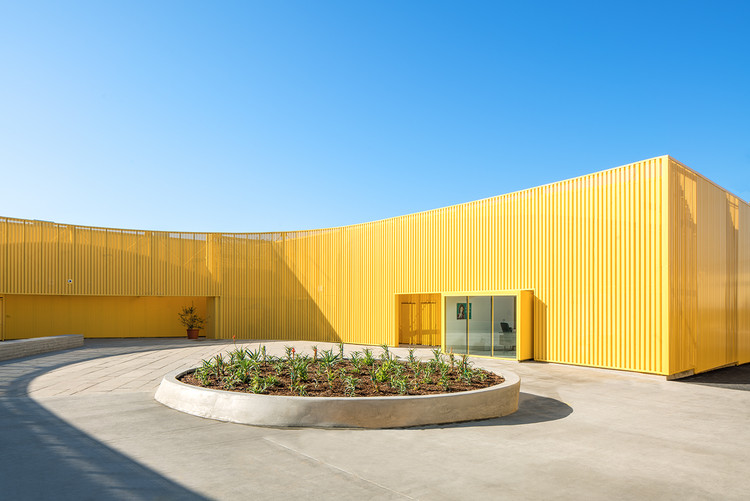
Following up on the AIA's recent update of guidelines regarding school safety, architect Jay Brotman, designer of the new Sandy Hook Elementary School, testified in front of the US Department of Education this week to urge the government to adopt safer standards for design. While not unheard of, it is not typical for architects to stand in front of Congress.
In his address to congress on behalf of the American Institute of Architects (AIA), Brotman, and partner at Svigals + Partners, spoke about prioritising the creation of an “inspiring, healthy environment that promotes learning”, highlighting the necessity of well designed, discrete responses to the ongoing conversations surrounding school shootings.
This testimony runs contrary to some of the discussions that have been taking place in politics and the media about safety in schools. Rather than advocating for agressive precautions such as arming teachers, Brotman emphasized that “..security features, while vital and necessary, should be as invisible as possible and incorporated into the school’s design. Failing to do so puts children’s education, emotional development and pro-social behaviour at risk.”
Pushing for legislation that promotes “open learning environments that enhance safety and security”, Brotman’s testimony built upon a prior statement by the AIA, focusing on two main goals. The first was to allow for architectural and design service eligibility with regard to the use of funds within existing federal funding and grants. The second was to establish an organization that would both collect and distribute “resources on school design best practices for school officials, architects and other design professionals.”
While these two main goals do address recurring problems within the profession as it stands - “a lack of access to quality school-design information and the ability to fund them” - it can be argued that the request don’t go far enough.

With years of experience designing schools in the Portland area Karina Ruiz, the AIA’s Committee on Architecture for Education (CAE) 2019 Chair, says a layered, strategic approach is most effective. Recognizing not only security strategies but also space for support and mental health services is crucial. Riaz suggests simple things such as “moving a counseling wing and putting those where students are located—near commons, near libraries—and then making them transparent,” can make a difference, going on to say that “...design can be an engager in prophecies that allow us to build softer schools—places where kids don’t feel disenfranchised and lost in the first place.”
Yet even guidelines established with the best intentions can have their downsides. Talking about bespoke design on a school-by-school basis, Brotman was clear in saying that there is no one-stop legislative solution. “Whether it’s a retrofit or new school,” he states, “each school must be designed for its unique student population, for its unique location, and to meet the needs of its unique community.”

In front of Congress, Brotman used the new Sandy Hook Elementary School as an example of what a modern, safer school typology could look like.
“There’s a rain garden with a sunken rock 'river,' along the entire front of the school–creating a moat of sorts, that is clearly not friendly to cars or people. The design then has three small footbridges to cross the rain garden to enter the school, which also controls entry, the children are unaware about the security benefits provided by the rain garden—and they don’t need to know. This small but impactful example shows the value of taking a comprehensive, design—centered approach to school security. It is a highly specific answer to multiple physical and emotional considerations at once.”


Moving forward, there is no doubt that the landscape of school-design is going to change. In the light of the seemingly more frequent school shootings, the “participatory design process” will become more complex, and architects must work to avoid the “unintentional adverse effects” caused with increased security measures. Jenine Kotob, an active member of CAE and school designer for Quinn Evans Architects in Washington, states how this type of poor design “really impacts the students and how they feel about themselves, and it kind of perpetuates the school-to-prison pipeline issue.”
In no way is anyone saying architecture is the solution to the problem. As Kotob says: “There is a pie, and the pie is comprised of legislation, policy, education, awareness, and technology—and then architecture is one small piece of it.” However, if the first steps Brotman and the AIA outlined to Congress are efficiently and successfully implemented, it will act as a strong tool to help combat the issue, and give America’s students a better chance of growing up in a safe and open school community.








